When it comes to sharing the road with cyclists, a little extra caution goes a long way. We all know that familiar feeling of seeing a bicycle ahead and wondering how best to navigate around it. Well, it turns out there are plenty of reasons why we should pay close attention when passing a bicycle. Not only is it a matter of safety for both the cyclist and ourselves, but it also promotes a culture of respect and understanding on the roads. So, let’s take a moment to explore the importance of being cautious when sharing the road with cyclists and why we should make it a priority.
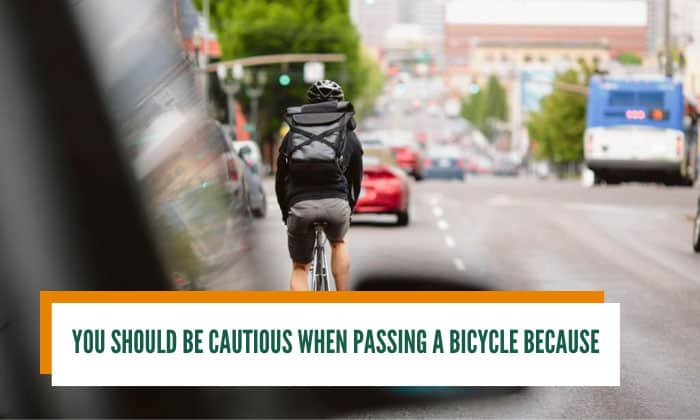
This image is property of biketoworkday.us.
Lack of visibility
When it comes to sharing the road with bicycles, one of the key factors that drivers need to be aware of is the inherent lack of visibility associated with bicycles. Bicycles are smaller and harder to spot compared to cars, making it crucial for drivers to be extra vigilant. This means taking the time to actively scan the road and check for any cyclists in the vicinity.
Moreover, bicycles may not have bright lighting installed. Unlike cars, bicycles often rely on smaller, less powerful lights. This can make it difficult for drivers to see them, especially in low-light conditions such as dusk or dawn. It’s important for drivers to be aware of this and adjust their driving accordingly. Being on the lookout for dimly lit bicycles can make a significant difference in ensuring the safety of both drivers and cyclists.
Additionally, bicycles can easily be hidden in blind spots. These blind spots can occur when passing parked cars, turning at intersections, or even in our vehicle’s rearview and side mirrors. Not being able to see a cyclist in these blind spots can have dangerous consequences, as it increases the risk of collisions. Always double-checking blind spots before making any maneuver on the road is crucial in preventing accidents involving cyclists.
Vulnerability of cyclists
Cyclists face a unique set of challenges and dangers when riding on the road, primarily due to their limited protection. Unlike drivers who are enclosed in the safety of a vehicle, cyclists are more exposed and vulnerable. In the event of an accident, cyclists lack the protective shell that cars provide, increasing the likelihood of severe injuries.
Furthermore, cyclists can easily lose balance, especially when faced with unexpected obstacles or sudden changes in road conditions. A slight nudge or a gust of wind can throw a cyclist off balance, putting them at risk of falling and potentially colliding with nearby vehicles. It is vital for drivers to be mindful of this vulnerability and exercise caution when overtaking or maneuvering around cyclists.
Lastly, cyclists are more prone to injury compared to motorists. Due to the lack of protective features like airbags and seatbelts, even minor incidents can result in significant harm to cyclists. Awareness of this vulnerability should lead drivers to be more considerate and prioritize the safety of cyclists on the road.
Unpredictability of cyclists
Cyclists, like any other road users, are not always predictable. Their movements can vary and change rapidly, making it more challenging for drivers to anticipate their actions. It’s important for drivers to understand and account for this unpredictability to minimize risks on the road.
Cyclists may change lanes unexpectedly, especially when navigating through traffic or avoiding obstacles such as parked cars or debris. This sudden change in direction can catch drivers off guard, potentially leading to accidents. By staying alert and keeping a safe distance, drivers can minimize the risk of collisions when encountering unpredictable lane changes by cyclists.
In addition, cyclists may swerve to avoid obstacles in their path, such as potholes or debris. While this is a natural reaction to ensure their own safety, it can surprise nearby drivers who may not have anticipated such evasive maneuvers. Drivers should maintain a safe following distance to allow cyclists space to maneuver safely and avoid sudden braking or swerving that can lead to accidents.
Moreover, cyclists may not always follow traffic rules strictly. While it is essential for all road users to adhere to traffic regulations, it’s important for drivers to expect occasional non-compliance from cyclists. This could range from running a red light to making a prohibited turn. By being mindful of the possibility of cyclists deviating from the expected behavior, drivers can better navigate the road and prevent accidents.
Importance of maintaining distance
Maintaining a safe distance when passing a bicycle is not only considerate but also crucial for preventing accidents. Many accidents occur when drivers pass too closely to cyclists, endangering both parties involved. By giving cyclists enough space, drivers can contribute to a safer and more harmonious road environment.
Close passing can startle and intimidate cyclists. When a vehicle passes too closely, the rush of air and the proximity can create a dangerous situation for cyclists. This can lead to loss of control or erratic movements by the cyclist, increasing the risk of accidents. By maintaining a safe distance, drivers can avoid such situations and give cyclists the space they need to feel secure on the road.
In addition, maintaining distance provides room for potential maneuvers. Cyclists may need to change lanes or adjust their position on the road due to various factors such as upcoming turns or road conditions. By ensuring there is enough space around cyclists, drivers can facilitate these necessary movements without causing any unnecessary obstruction or danger.
Avoiding close proximity ultimately reduces the risk of collisions. It allows for better reaction time and prevents the possibility of sideswiping or colliding with a cyclist during overtaking. By giving cyclists enough room, drivers can significantly decrease the chances of accidents and ensure the safety of all road users.
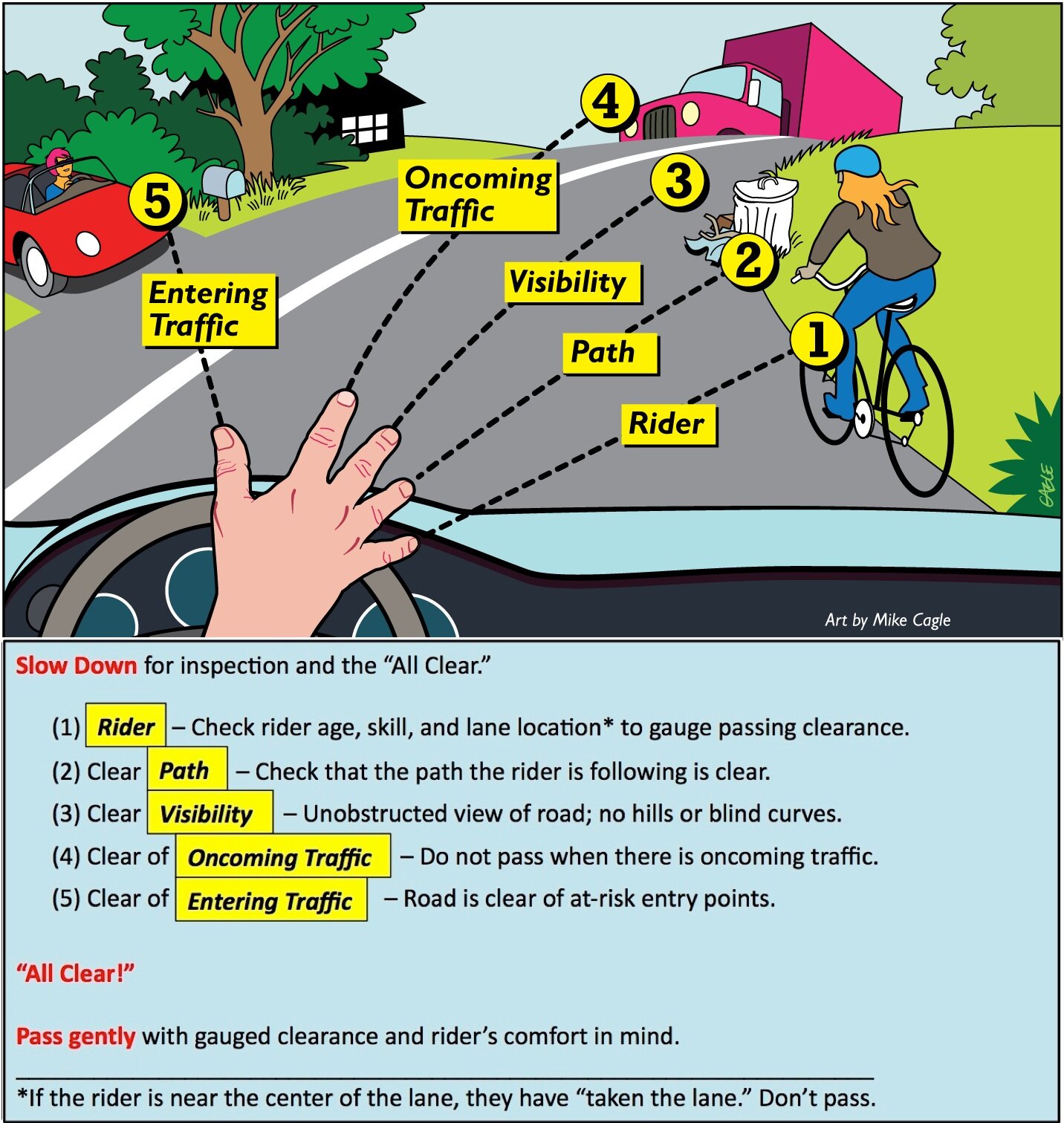
This image is property of images.squarespace-cdn.com.
Potential dangers of distractions
In today’s fast-paced world, distractions have become all too common on the road. However, for drivers passing cyclists, distractions can have severe consequences. Being attentive and avoiding distractions is crucial to ensure the safety of cyclists and prevent accidents.
Distractions can prevent timely reactions to cyclist movements. Whether it’s glancing at a phone or being engrossed in conversation, distractions can divert a driver’s attention away from the road. This can result in delayed reaction times, making it harder to respond effectively to any sudden movements or turns made by cyclists. A split second of inattention can lead to disastrous consequences. Therefore, it is essential for drivers to eliminate distractions and prioritize their focus on the road at all times.
Furthermore, distractions increase the risk of accidents involving cyclists. When drivers are not fully engaged in their surroundings, they may fail to notice cyclists, potentially leading to collisions. Even a momentary lapse in attention can have severe repercussions for the safety of both drivers and cyclists. The simple act of staying focused and attentive behind the wheel can go a long way in preventing accidents caused by distractions.
Impact of road conditions on cyclists
Road conditions play a significant role in the safety of cyclists. It is important for drivers to understand how different road conditions can affect cycling stability, as well as their own ability to share the road safely with cyclists.
Potholes and uneven surfaces pose a greater risk to cyclists. While a pothole or uneven road may only cause a minor bump for a vehicle, it can be an accident waiting to happen for a cyclist. Hitting a pothole or encountering a rough surface can throw a cyclist off balance and potentially lead to a collision with nearby vehicles or obstacles. Drivers should be mindful of this and take extra caution when sharing the road with cyclists on uneven surfaces.
Wet or slippery roads can also significantly affect cycling stability. Rain, oil spills, or even wet leaves can make the road slippery and increase the chances of accidents for cyclists. Drivers should be aware of the potential decrease in traction these conditions can cause, and allow cyclists the necessary space and time to navigate safely.
Moreover, poorly maintained bike lanes may force cyclists to share the road with vehicles. In some areas, bike lanes may be substandard, obstructed, or non-existent, making it necessary for cyclists to ride alongside traffic. This can increase the risk of accidents, especially if drivers are unaware of the presence of cyclists sharing the road. Drivers should remain vigilant and be prepared to accommodate cyclists when bike lanes are inadequate or unavailable, ensuring everyone’s safety.
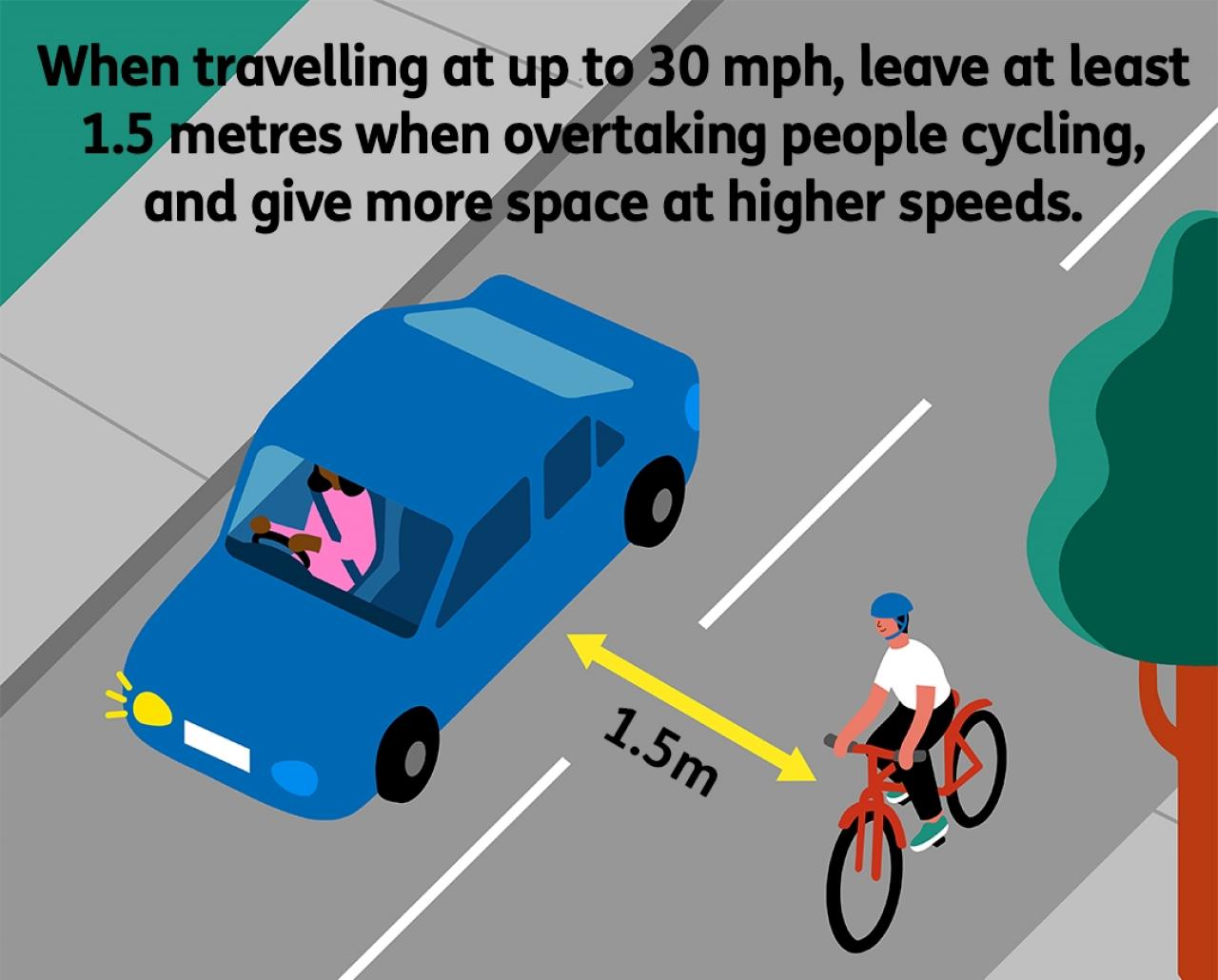
This image is property of cdn.road.cc.
Importance of signaling intentions
Signaling intentions is essential when sharing the road with any mode of transportation, and cyclists are no exception. Understanding cyclist signals and responding appropriately can make a significant difference in preventing accidents and promoting a smoother flow of traffic.
Cyclists may use hand signals to indicate turns. Unlike vehicles with built-in turn signals, cyclists rely on hand signals to communicate their intended movements to other road users. By familiarizing oneself with these signals and understanding their meanings, drivers can better anticipate the actions of cyclists and adjust their own driving accordingly. This mutual understanding enhances safety and avoids confusion on the road.
Understanding cyclist signals also helps in avoiding sudden movements. By recognizing a cyclist’s intent to turn or change lanes, drivers can adjust their driving to accommodate the cyclist’s maneuver. Sudden braking or swerving can be dangerous, especially if a cyclist is in close proximity. Drivers should always give cyclists enough space and time to execute their signals without causing any potential hazards.
Moreover, signaling helps establish better communication on the road. When both drivers and cyclists signal their intentions, it promotes a sense of shared responsibility and cooperation. This proactive approach to communication can prevent misunderstandings, reduce the risk of accidents, and create a more harmonious road environment for everyone.
Influence of weather conditions on cyclists
Weather conditions can have a significant impact on the safety of cyclists. It is crucial for drivers to be mindful of how different weather conditions can affect both their own driving and the actions of cyclists on the road.
Strong winds can affect cyclist control. Cyclists are particularly vulnerable to strong gusts of wind, which can make it challenging to maintain stability and control. Drivers should exercise caution when passing cyclists in windy conditions and give them extra space to compensate for any potential loss of stability.
Rain or fog can reduce visibility for both cyclists and drivers. Wet road surfaces and reduced visibility require extra caution from all road users. It may be more difficult for drivers to spot cyclists in these conditions, and cyclists may have decreased visibility of their surroundings. Being aware of these limitations and adapting one’s driving to maintain a safe distance is crucial in ensuring everyone’s safety.
Extreme weather conditions can also impact decision-making abilities. For both drivers and cyclists, being exposed to extreme heat or cold can affect concentration and reaction times. It is important for drivers to be patient and understanding of cyclists who may need additional time to navigate through challenging weather conditions. By granting cyclists extra caution and space, drivers can contribute to a safer road environment for all.
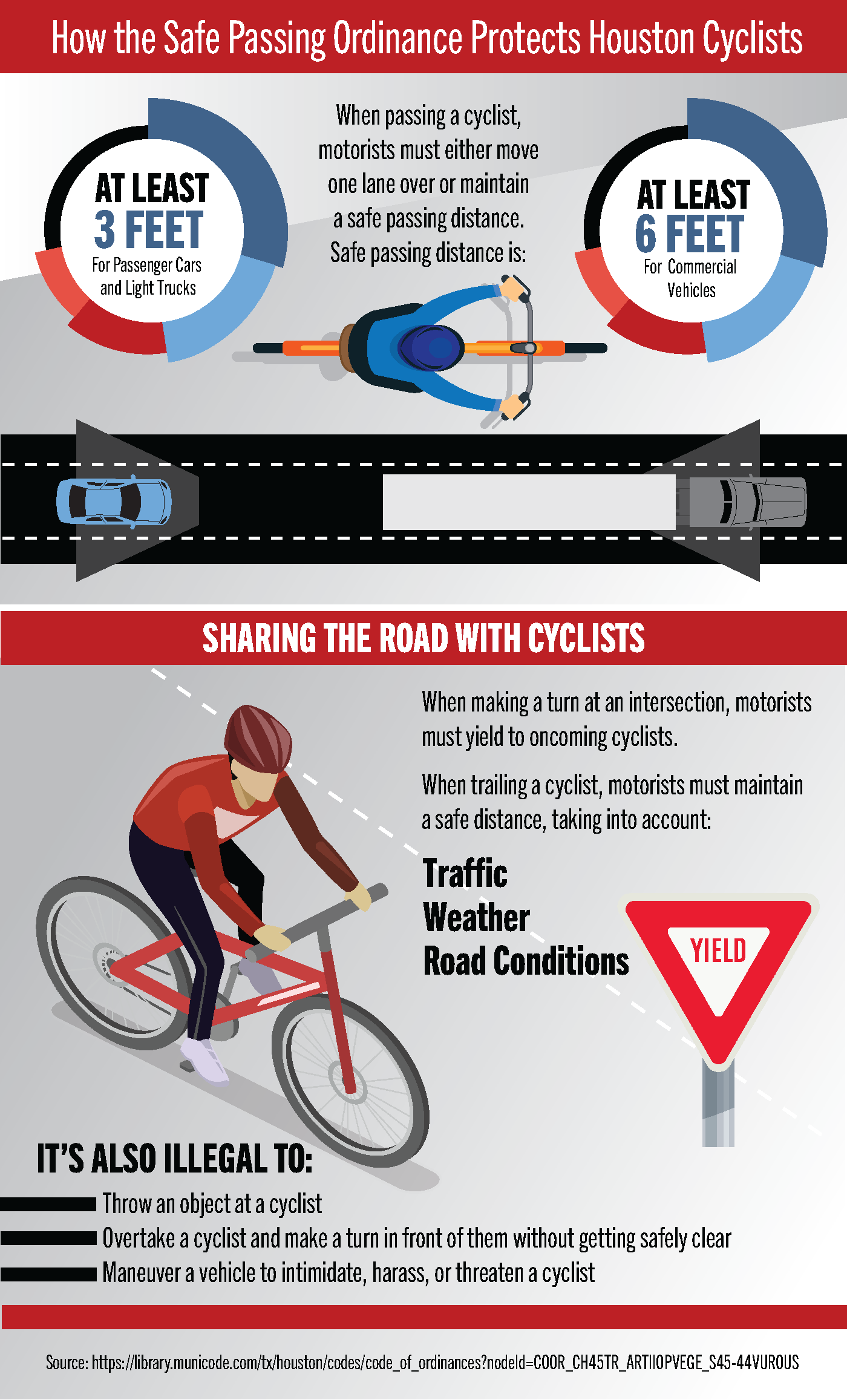
This image is property of www.smithandhassler.com.
The benefits of defensive driving
Practicing defensive driving is essential when sharing the road with cyclists. By adopting a defensive mindset, drivers can anticipate cyclist actions, prevent accidents, and contribute to a safer and more harmonious road environment.
Anticipating cyclist actions reduces the risk of accidents. Defensive driving involves being aware of the surrounding environment and anticipating potential hazards, including the movements of cyclists. By scanning the road ahead and keeping an eye out for any signs of cyclists, drivers can proactively adjust their driving to accommodate the presence of cyclists and prevent any possible collisions.
Defensive driving also promotes a safer and more harmonious road environment. By being considerate, patient, and respectful of all road users, drivers set a positive example for others. This creates an atmosphere of mutual respect and cooperation and reduces the likelihood of reckless behavior and conflicts between cyclists and drivers. Practicing defensive driving not only enhances safety but also fosters a more pleasant commuting experience for everyone involved.
Drivers who are cautious around cyclists set a positive example for others. Adopting a defensive driving approach sends a powerful message to other drivers and encourages them to be more mindful and considerate of cyclists on the road. By leading by example, drivers can contribute to a cultural shift towards safer and friendlier roads, where everyone feels respected and protected.
Legal obligations when passing cyclists
When passing cyclists, it is essential for drivers to be aware of the legal obligations that differ by jurisdiction. Familiarizing oneself with local laws and regulations regarding passing cyclists is crucial for ensuring compliance and preventing legal consequences.
Laws vary by jurisdiction, but most require a safe passing distance. Different regions have different requirements for the minimum passing distance that drivers must maintain when overtaking cyclists. This distance is typically designated to ensure the safety of cyclists and prevent accidents. It is essential for drivers to familiarize themselves with the specific regulations in their jurisdiction to avoid any legal consequences.
Some areas have specific laws regarding passing cyclists. In recognition of the vulnerability of cyclists on the road, some jurisdictions have implemented additional laws or regulations specifically aimed at protecting cyclists during overtaking maneuvers. These laws may include requirements for a minimum safe passing distance, reduced speed limits when passing cyclists, or even special zones for cyclists. Drivers should be aware of any unique regulations in their area to ensure compliance and promote the safety of all road users.
Knowing and following the law can help prevent legal consequences. Familiarity with the local laws regarding passing cyclists not only ensures compliance but also prevents potential legal repercussions. By understanding and adhering to these laws, drivers can maintain a good standing within the legal system and contribute to a safe and responsible driving culture.
In conclusion, being cautious when passing a bicycle is essential for the safety of both drivers and cyclists on the road. The inherent lack of visibility, vulnerability of cyclists, and unpredictability of their actions emphasize the need for drivers to exercise extra caution. Additionally, maintaining distance, being mindful of distractions, adapting to road conditions, signaling intentions, practicing defensive driving, and understanding legal obligations are crucial components for ensuring the safety of cyclists and promoting a harmonious road environment. By considering these factors and adopting a friendly and considerate mindset, drivers can actively contribute to a safer and more inclusive road culture.
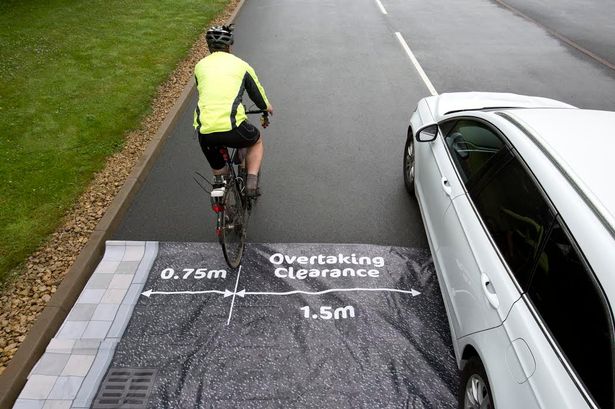
This image is property of i2-prod.gazettelive.co.uk.




